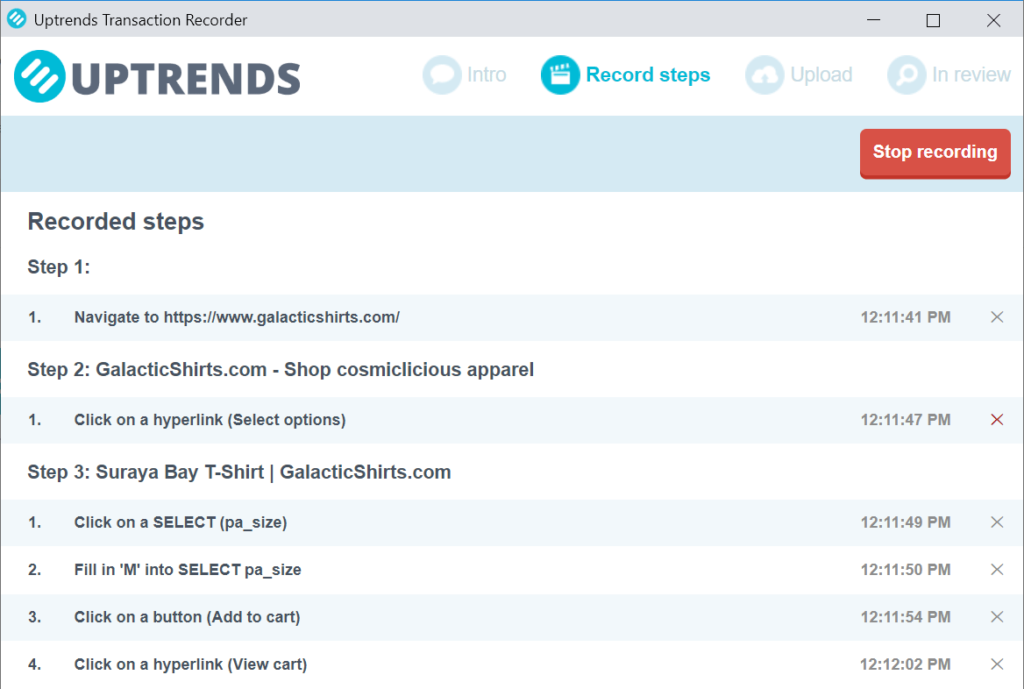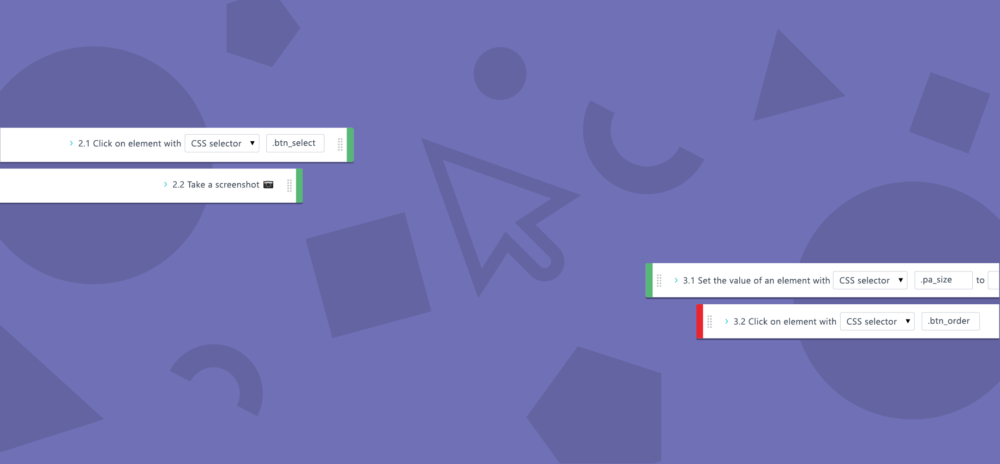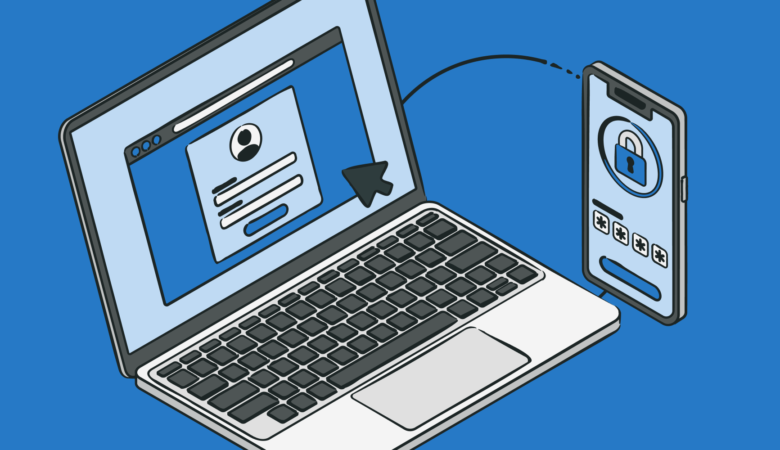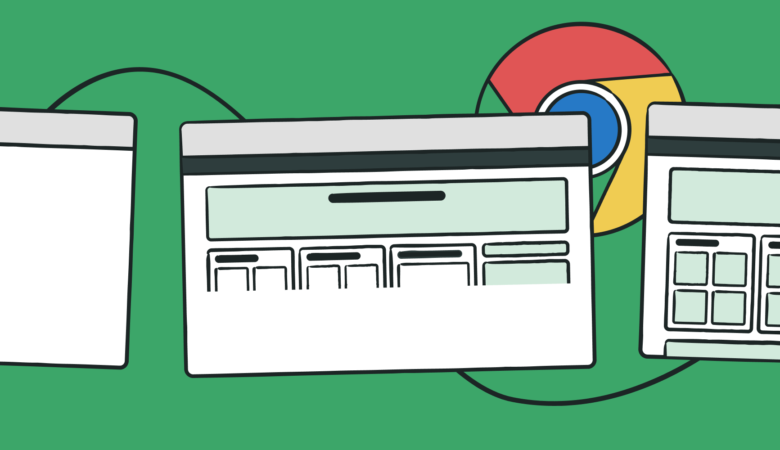We’ve released our newest feature, Self-Service Transactions (SST), for the beta release. Although you can still have us take care of the scripting for you (Full-Service Transactions), with SST you write and manage your own scripts. You can use our handy visual Step Editor, write your code directly into the text editor, or interface with our API. (Learn more about the beta)!
So, what is Web Application Monitoring?
Web Application Monitoring (Transaction Monitoring) is a systematic way of testing your website for performance and function using a browser just like your users. If any part of your user journey fails, Uptrends sends you an alert to let you know that your site is in trouble.
What are Self-Service Transactions?
Up until now, your only choice for scripting your transactions were our Full-Service Transactions (FST). With FST, you send a recording (made with the Transaction Recorder Chrome extension) of your transaction, and our team of scriptwriters takes it from there. The scripting team uses your recording to write and stabilize your transaction scripts.

Full-service Transactions are great, but it takes time to get your script written, and making changes later on can take time. Now you can do it all yourself and change up your scripts whenever you want.
With Self-Service Transactions, you have several different ways that you can manage your transaction monitors. We’ve got options for every level of technical know-how.
- Record your transactions and let our scripting team take it from there; just like you’ve always done.
- Record and stabilize the transaction script yourself using our new Step Editor.
- Generate your script from scrap using the Step Editor.
- Toggle from the visual Step Editor to the text editor and write the code yourself.
- Use your own scripting environment and source control system and paste your script into the text editor or upload them using our API.
You do as much or as little as you would like. If you need help or need us to take over, just open a support ticket. Our team is always here to support you, no matter which path you pick.
How do Self-Service Transactions work?
If you’re comfortable with basic HTML and CSS, you can probably take care of your scripts yourself (It doesn’t hurt to know a little XPath and JSON as well). Our user testing has shown that people with little to no technical experience can frequently figure things out and work through challenges.
Most users will use the Transaction Recorder to start. We recommend using the Transaction Recorder for users at every skill level—looking at you advanced and pro users—the choice and control is all yours.
Note: The Transaction Recorder has been replaced with a new version. Download the new recorder and delete the old one.
Once you’ve recorded your transaction, you can either upload the recording to your Uptrends account (Self-Service Transactions) or send the recording to support (Full-Service Transactions). Our support team notifies you when your new monitor is ready and available in your account (read the script review policy).
Edit and write your scripts using the Step Editor
For SST users, you can use our Step Editor to test and modify the recording into a stable script. You can also use the Step Editor to write your script from scratch.
Steps
With the Step Editor, you can break your transaction down into logical steps. Your monitor reports your transaction’s performance based on each step. We recommend that you end each step with a transition or server request such as a submit. Ending with a request (and a content check) lets you capture your server and page load times. However, you can define a step to fit your use case and needs.
You can also add a waterfall report to a step for a detailed view of your server response times and page load times.

Actions
Inside each step, you add actions. An action, at its most basic, is your user interactions such as clicks. However, there are also a few actions that allow you to verify content and interact with the browser window directly. You can define actions as
- User interactions: Page navigation, and events such as clicks, set a value, and hover events.
- Page and element tests: Test for element or document content (verifies a result), and wait for an element (used when you need to allow for extra time for something to show up).
- Controls: Grab a screenshot, switch browser tabs or windows, switch iframes, and scroll to an element in the browser (helpful with screenshots).

Element Selectors
The script locates page elements using XPath query and CSS selectors—relax, they only sound scary. Our Transaction Recorder uses an algorithm to decide the best selector. However, the recorder can’t do anything about dynamic page elements like changing IDs. You may need to do a little XPath query or CSS selector magic. It is easier than you may think.

Testing your web application monitor
Our new Monitor Modes allow you to put a monitor in three different modes.

Development: Using development mode, you manually conduct tests using the Test now button. Because you can watch the test in progress, you know exactly where your monitor runs into trouble—debugging made easy. While in development mode, your monitor is never scheduled for automated tests, and the monitor doesn’t count towards your transaction credits. Since your monitors in development mode don’t use credits, you can have as many as you want. When you’re ready for the next level of testing, you switch to staging mode.
Staging mode: When you put your monitor in staging mode, Uptrends schedules your monitor for automated checks. However, those checks do not affect your reporting or uptime, and no alerts are sent out for any errors. Running automated tests helps you identify transaction script issues that may not surface during development mode, such as localized content changes. To move a monitor to staging mode, you need to have credits available, and you free-up those credits when you switch a monitor back to development mode. After you’ve run a transaction in staging mode for a few weeks and you’re confident your script is stable, you move the monitor to production mode.
Production mode: Production is the real world. Your monitor is taking measurements and reporting on them and issuing alerts for errors it encounters. Hopefully, you have fully tested your script in development and staging mode before moving it to production mode. Monitors in production mode use your transaction credits, but you can release the credits by switching the monitor back to development mode. Monitor mode makes it easy to have new scripts ready when you make site changes.
What does it mean to be a beta tester?
Our Self-Service Transactions (Web Application Monitoring) have seen thousands of hours of testing before we moved them to beta testing. Our developers have worked side-by-side with our private alpha testers to make sure the features you need are ready for you. So you can be sure that the monitoring environment is very stable and safe for you to use.
- Transaction monitoring is available to our Business and Enterprise plan customers, and you can choose to try Self-Service Transactions without interrupting your current monitors.
- No additional cost. It doesn’t matter if you choose Full-Service or Self-Service transactions, the pricing for transaction monitoring isn’t changing, just your options.
- SST is fully supported, so you can get all the help you need from our Support team.
- We’ve got detailed documentation coming soon.
Advantages of being a beta tester
Who doesn’t want to be an early adopter? Right? You get to play with new stuff before anyone else, and with SST you don’t have to worry about buggy code or inflated prices. Most importantly, you get to be an influencer on the final release. Although a majority of the work is complete on Self Service Transactions, beta testing gives you the opportunity to communicate your wishes and desires straight to the development team. Your suggestions may just get incorporated in the final release.
Can I be a Self-Service Transaction beta tester?
Any current account or new trial holder (trials beginning after Sept 4, 2019) with a Business or Enterprise plan may participate. Existing account holders need to opt in; if you have a new trial, your participation is automatic, and you can start using Self-Service Transactions now.




